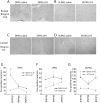Altered formalin-induced pain and Fos induction in the periaqueductal grey of preadolescent rats following neonatal LPS exposure
- PMID: 24878577
- PMCID: PMC4039471
- DOI: 10.1371/journal.pone.0098382
Altered formalin-induced pain and Fos induction in the periaqueductal grey of preadolescent rats following neonatal LPS exposure
Abstract
Animal and human studies have demonstrated that early pain experiences can produce alterations in the nociceptive systems later in life including increased sensitivity to mechanical, thermal, and chemical stimuli. However, less is known about the impact of neonatal immune challenge on future responses to noxious stimuli and the reactivity of neural substrates involved in analgesia. Here we demonstrate that rats exposed to Lipopolysaccharide (LPS; 0.05 mg/kg IP, Salmonella enteritidis) during postnatal day (PND) 3 and 5 displayed enhanced formalin-induced flinching but not licking following formalin injection at PND 22. This LPS-induced hyperalgesia was accompanied by distinct recruitment of supra-spinal regions involved in analgesia as indicated by significantly attenuated Fos-protein induction in the rostral dorsal periaqueductal grey (DPAG) as well as rostral and caudal axes of the ventrolateral PAG (VLPAG). Formalin injections were associated with increased Fos-protein labelling in lateral habenula (LHb) as compared to medial habenula (MHb), however the intensity of this labelling did not differ as a result of neonatal immune challenge. These data highlight the importance of neonatal immune priming in programming inflammatory pain sensitivity later in development and highlight the PAG as a possible mediator of this process.
Conflict of interest statement
Figures



Similar articles
-
Programming of formalin-induced nociception by neonatal LPS exposure: Maintenance by peripheral and central neuroimmune activity.Brain Behav Immun. 2015 Feb;44:235-46. doi: 10.1016/j.bbi.2014.10.014. Epub 2014 Oct 31. Brain Behav Immun. 2015. PMID: 25449583
-
Altered nociceptive, endocrine, and dorsal horn neuron responses in rats following a neonatal immune challenge.Psychoneuroendocrinology. 2014 Mar;41:1-12. doi: 10.1016/j.psyneuen.2013.11.016. Epub 2013 Dec 4. Psychoneuroendocrinology. 2014. PMID: 24495603
-
Neuronal hyperactivity at the spinal cord and periaqueductal grey during painful diabetic neuropathy: effects of gabapentin.Eur J Pain. 2010 Aug;14(7):693-9. doi: 10.1016/j.ejpain.2009.11.011. Epub 2009 Dec 28. Eur J Pain. 2010. PMID: 20056558
-
Characterization of nociceptive response to chemical, mechanical, and thermal stimuli in adolescent rats with neonatal dopamine depletion.Neuroscience. 2015 Mar 19;289:43-55. doi: 10.1016/j.neuroscience.2015.01.002. Epub 2015 Jan 12. Neuroscience. 2015. PMID: 25592423
-
Pro-nociceptive action of cholecystokinin in the periaqueductal grey: a role in neuropathic and anxiety-induced hyperalgesic states.Neurosci Biobehav Rev. 2008;32(4):852-62. doi: 10.1016/j.neubiorev.2008.01.003. Epub 2008 Jan 18. Neurosci Biobehav Rev. 2008. PMID: 18295886 Review.
Cited by
-
Changes in the analgesic mechanism of oxytocin can contribute to hyperalgesia in Parkinson's disease model rats.PLoS One. 2024 Aug 20;19(8):e0300081. doi: 10.1371/journal.pone.0300081. eCollection 2024. PLoS One. 2024. PMID: 39163355 Free PMC article.
-
Low-quality protein modulates inflammatory markers and the response to lipopolysaccharide insult: the case of lysine.Br J Nutr. 2023 Sep 28;130(6):944-957. doi: 10.1017/S0007114522004068. Epub 2023 Jan 4. Br J Nutr. 2023. PMID: 36597807 Free PMC article.
-
Neuroimmune modulation of pain across the developmental spectrum.Curr Opin Behav Sci. 2019 Aug;28:85-92. doi: 10.1016/j.cobeha.2019.01.010. Epub 2019 Mar 19. Curr Opin Behav Sci. 2019. PMID: 32190717 Free PMC article.
-
Local injury and systemic infection in infants alter later nociception and pain affect during early life and adulthood.Brain Behav Immun Health. 2020 Nov 10;9:100175. doi: 10.1016/j.bbih.2020.100175. eCollection 2020 Dec. Brain Behav Immun Health. 2020. PMID: 34589906 Free PMC article.
-
Early life programming of pain: focus on neuroimmune to endocrine communication.J Transl Med. 2016 May 6;14(1):123. doi: 10.1186/s12967-016-0879-8. J Transl Med. 2016. PMID: 27154463 Free PMC article. Review.
References
-
- Ruda MA, Ling QD, Hohmann AG, Peng YB, Tachibana T (2000) Altered nociceptive neuronal circuits after neonatal peripheral inflammation. Science 289: 628–631. - PubMed
-
- Walker SM, Tochiki KK, Fitzgerald M (2009) Hindpaw incision in early life increases the hyperalgesic response to repeat surgical injury: critical period and dependence on initial afferent activity. Pain 147: 99–106. - PubMed
-
- Ren K, Anseloni V, Zou SP, Wade EB, Novikova SI, et al. (2004) Characterization of basal and re-inflammation-associated long-term alteration in pain responsivity following short-lasting neonatal local inflammatory insult. Pain 110: 588–596. - PubMed
Publication types
MeSH terms
Substances
LinkOut - more resources
Full Text Sources
Other Literature Sources
Medical

